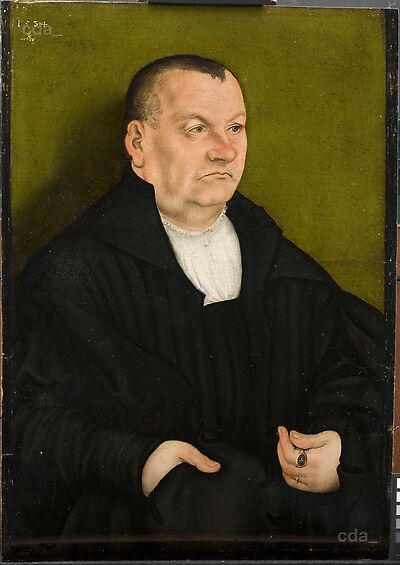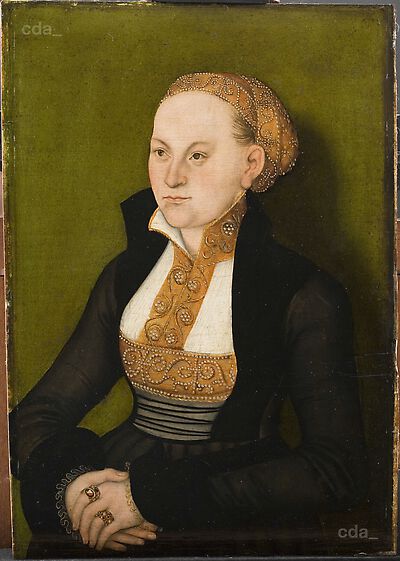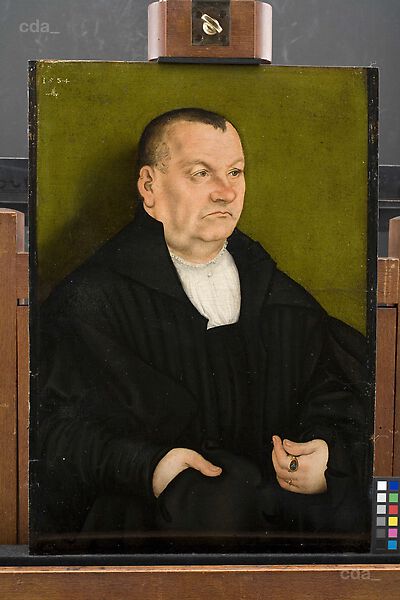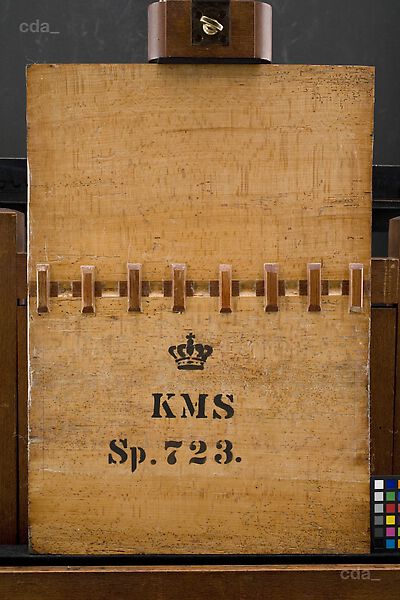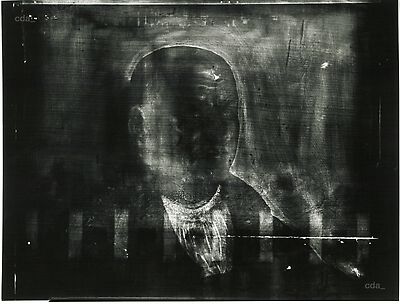Support
The wooden support is 5 mm thick and the wooden type is beech.
The panel consists of two horizontal planks with vertical grains compared to the motif. The panel has no knots, tool tracks or fibre material on the back.
Ground and Imprimatura
There is fibre material under the ground and it is slightly visible on the surface of the painting seen in side light. The fibre material over the joint is also visible on X-ray.
There are scratches in the ground along all edges of the painting except the top edge. This fact and the fact that the colour on the top edge of the panel goes all the way to the edge of the panel indicates that the panel has been cut.
The ground is applied with brush or scraped on with a kind of iron. The ground doesn’t fill the whole panel but stops 0.7 - 1.0 cm before the edges.
Cross section no. 319b indicates that there could be an isolation layer on top of the ground which consists of some kind of oil, possible mixed with white lead.
Underdrawing
The underdrawing is made with a wet medium in a greyish tone. The coloured layers follow the underdrawing except the nose of the woman which is smaller than the underdrawing indicates. Her eyes are also painted with thicker lines than the underdrawing.
The shadows in the background are painted as an orange brown underpaint and on top of this is the translucent green colour layer.
It could look like the flesh paint is underdrawn in a light brown colour.
Paint Layers and Gilding
Oil paint on wood.
The background and the black coat are painted before the flesh paint of the hands. The flesh paint is made by translucent layers in different shades of colour. The shadows in the incarnation are painted in thin translucent layers and at the end the highlights was painted.
The mouth and nose are painted with dark, almost black brushstrokes. The finest black brushstrokes (eyes etc.) are painted wet in wet.
The white shirt is painted at last.
The background is painted with a thick translucent layer on top of the underpaint. There are no visible brushstrokes in the paint besides of the highlights.
Framing
The frame is painted black and partly gilded.
Unknown whether the frame is the original.
[Mette Kokkenborg, Statens Museum for Kunst, 2013]
